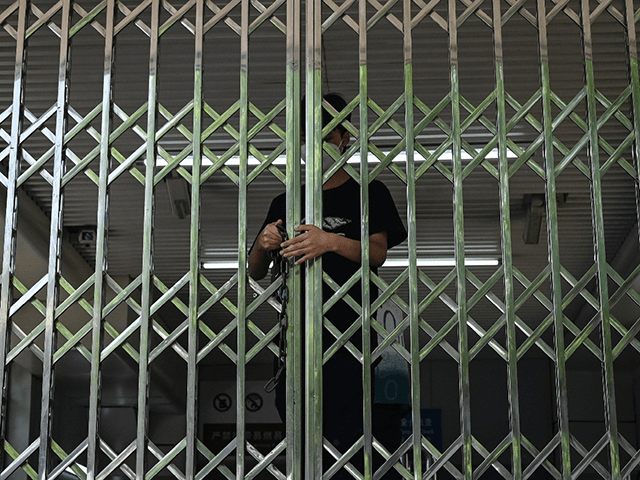The Chinese Communist regime has not imposed one of its deranged “dynamic zero-Covid” lockdowns on the capital city of Beijing, but more of the city slips into lockdown territory with each passing day, and on Wednesday the city shut down much of its mass transit system, making it nearly impossible for nervous residents to leave.
“The number of confirmed cases in the capital in this round of outbreak has exceeded the total number in the outbreak involving the Xinfadi wholesale market in 2020,” a spokesman for the city government said Wednesday, referring to the worst officially-acknowledged outbreak from the initial coronavirus wave in June 2020.
Chinese government claims about coronavirus case numbers should never be taken at face value, but Beijing is teetering on the brink of a devastating lockdown despite only reporting 51 new cases on Wednesday. The total population of Beijing is about 22 million.
Across all of China, the highly contagious omicron outbreak supposedly produced only 5,489 cases on Wednesday. Almost all of them were asymptomatic infections in Shanghai, whose grueling month-long lockdown is terrifying residents of Beijing and other large cities.
Beijing shuttered over 60 of its subway stations on Wednesday, mostly in the Chaoyang district, where the bulk of the city’s coronavirus infections have been reported. 158 bus routes were also suspended.
Beginning on Thursday, access to all remaining public transportation in Beijing will require proof of a negative nucleic acid test performed within the past seven days. Foreigners living in Beijing braced themselves for a “commuting nightmare,” as Canadian resident Richard Parsley put it, after the five-day May Day holiday concludes and normal business resumes on Thursday morning.
Gonna be a commuting nightmare for many tomorrow morning when the holidays end.
Plus everyone will need to show proof of recent Covid test to use public transit.
Can only imagine the monster queues! https://t.co/pIuetPoAM9— 💙💛 RF Parsley (@sanverde) May 4, 2022
City officials further announced that schools, restaurants, and other public venues will remain closed indefinitely. Beijing residents were urged to work from home, although most residential complexes have not yet been turned into prisons with armed guards, as in Shanghai.
Beijing’s Municipal Health Commission said on Wednesday the isolation unit at Xiaotangshan hospital has been reactivated as a “precaution.” Roughly a dozen patients are currently receiving treatment there.
China’s state-run Global Times on Tuesday continued spinning Beijing’s creeping lockdown as a highly successful effort to root out “hidden sources of infection in some communities” and avoid a Shanghai-type nightmare in the capital city.
The Global Times awkwardly conceded that contrary to its upbeat reporting, leaving Beijing is becoming increasingly difficult:
Those who really need to leave Beijing must present a nucleic acid test negative certificate taken within 48 hours and a green health code before boarding a plane or a train. Airports and railway stations will strengthen inspection, and spot checks will also be carried out on those leaving Beijing by road. Anyone who are unable to present a green health code will not be allowed to enter or leave Beijing, officials confirmed at the press conference.
…
Starting from Thursday, the first working day after the May Day holiday, the Beijing Capital International Airport will require all people show a negative nucleic acid test result taken within seven days to enter any of the terminals. As of Tuesday, the number of locally infected cases in Beijing from the recent outbreak had reached over 430.
Travel restrictions across China, especially at the Port of Shanghai, are combining with disruptions from the Russian invasion of Ukraine to create a new global supply chain crisis.
The Royal Bank of Canada (RBC) on Tuesday estimated that fully one-fifth of the entire global container ship fleet is currently trapped in port congestion, a great deal of it radiating from China. Between coronavirus lockdowns that obstruct the movement of goods across land in China, and this growing port congestion, the average delay for shipments from Chinese warehouses to American importers is now 74 days longer than normal.

COMMENTS
Please let us know if you're having issues with commenting.